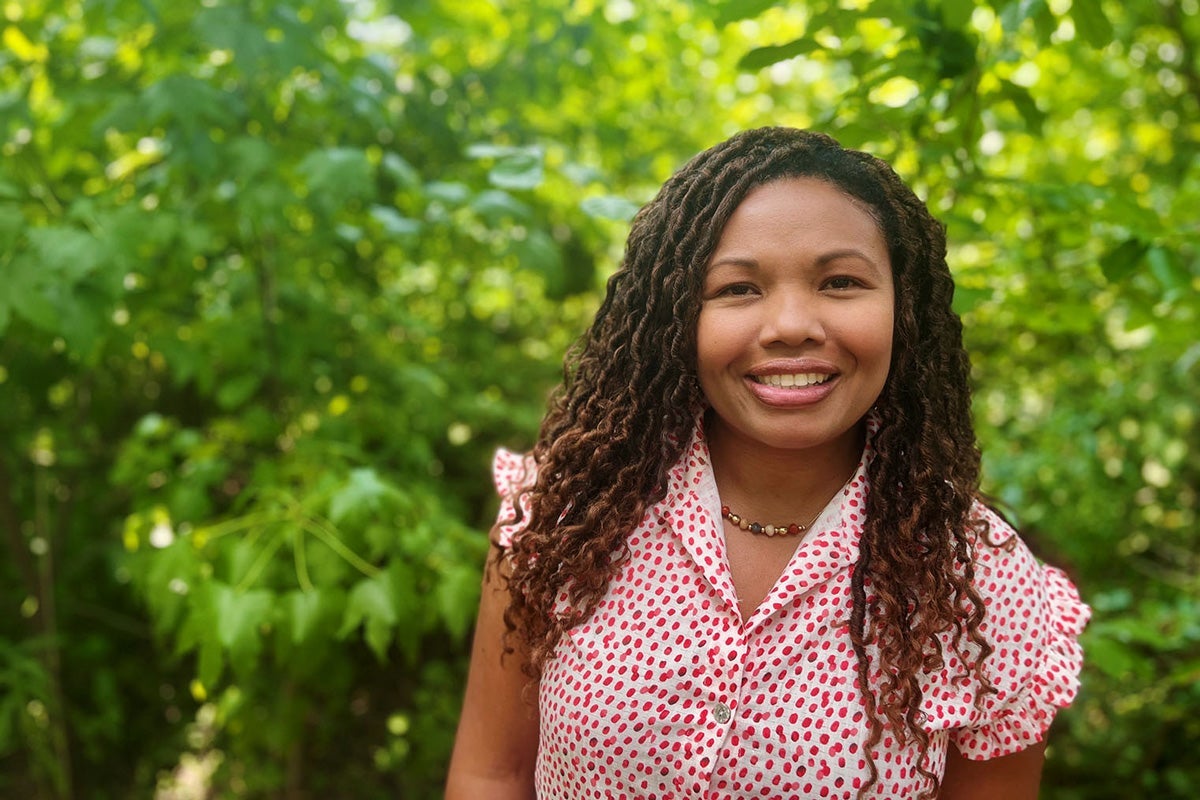Three lessons from a career dedicated to health equity

By Shirley Sylvester, MD, MPH ’06
September 12, 2024 – I still remember the fear, almost paralysis, I felt at the start of my career whenever I diagnosed a patient with tuberculosis or HIV.
I knew what medications I should prescribe, but I was stationed in a remote cluster of villages in Colombia, and my clinic didn’t always receive a steady supply of medicines. We sometimes ran out in the middle of a patient’s treatment cycle. Even if we had the medicines, many patients could not make the arduous, hours-long trek upriver to the clinic every time they were due for refills or follow-up. Such interruptions in their treatment regimen put their health at grave risk.
I soon came to realize that these issues required a systemic response. I wanted to be part of that solution. I shifted my focus from clinical care to public health, earning an MPH at Harvard Chan School in 2006.
Since then, my career has taken many wonderful turns, as I have worked to advance equity and expand access to high-quality care. Here are three lessons I’ve learned along the way.
Listen carefully to the communities you serve
This was a key takeaway from a maternal health project I collaborated on in rural Guatemala with various partners.
To reduce deaths from postpartum hemorrhage, health officials hoped to bring women living in remote areas to well-equipped hospitals to give birth. After speaking with Indigenous women in the target villages, however, we realized that such a strategy would not succeed. These women had a strong tradition of giving birth at home, supported by friends and family. We recognized the value in honoring their Indigenous tradition and understood we were unlikely to change the course of their birthing journeys.
So we rethought the approach. Rather than bring women into hospitals, we focused on improving training for the midwives who attended home births in rural villages.
Many of these midwives lacked formal education, so there was tension between them and the medical establishment. They didn’t often work together. But we found the midwives keen to learn new skills and eager to help reduce maternal mortality. By listening to the community we sought to serve and respecting their voices, we were successful in saving lives.
Seek out partners with different perspectives
Problem-solving is a team sport. And if your team includes collaborators who bring different skills, networks, and resources to the table, you are more likely to succeed.
I saw this firsthand when I worked on an effort to expand access to new curative drugs for hepatitis C in the United States. Some insurers wouldn’t cover the therapy because of a perception that most people with hepatitis C were drug users. Some patients, meanwhile, were scared to seek treatment because of the disease’s stigma.
In response, we assembled a coalition that included patients, clinicians, advocacy groups, pharmaceutical companies, public officials, and nongovernmental organizations. Each of us worked to educate our stakeholders on how these therapies would make a difference to individuals and communities. One key point: Providing this curative treatment was not only the right thing to do for patients, but also the right thing to do for the health care system, as untreated patients require decades of increasingly costly interventions, straining resources.
It took a lot of partners with different skill sets and constituencies, but over time, we were able to vastly increase access to this powerful therapy.
The private sector can be a catalyst for equity
I’ve worked for Johnson & Johnson for more than a decade now. I feel fortunate that it is a values-driven company; the first line of our corporate credo emphasizes our responsibility to patients. As a public company, J&J also has responsibilities to its shareholders.
Luckily, I have come to see that these dual responsibilities do not have to be in conflict. Doing good for the world can also be good for business.
Here’s one example: Investing in efforts to diversify our clinical trials by including more women and people from different racial, ethnic, and geographic backgrounds is the right thing to do for equity. We gain critical information about how our innovations impact different populations. That’s a clear win for public health. Gathering clinical data from diverse populations also enables clinicians to make informed decisions about the use of our products.
Public health advocates should look for opportunities to align incentives in this way to bring more private companies into health equity work.
Fighting for equity and access can be incredibly rewarding. If you’re interested in such work, I’d advise you to start with meaningful community engagement, actively seek nontraditional partners, and remain steadfast in your commitment to the cause. It takes patience and persistence, but together we will make progress, working toward a future where everyone achieves their full health potential.
—Shirley Sylvester is senior director for medical and patient assistance solutions in the Global Health Equity division of Johnson & Johnson.